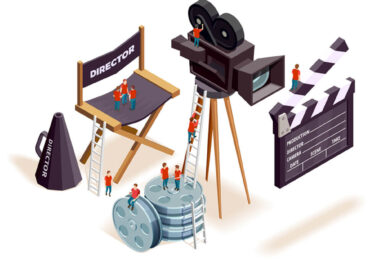Introduction
Lights, camera, AI action! The world of video production is undergoing a seismic shift, thanks to the explosive growth of generative artificial intelligence. From script writing to post-production magic, AI is reshaping how we create, edit, and distribute video content. Whether you’re a seasoned filmmaker or a content creator just starting out, understanding the power of generative AI is crucial to staying ahead in this rapidly evolving landscape. In this article, we’ll dive deep into the game-changing ways AI is transforming video production and explore how you can harness its potential to take your projects to the next level.
The AI Revolution in Video Production
1. Supercharged Scriptwriting
Gone are the days of staring at a blank page, waiting for inspiration to strike. Generative AI is now your creative co-pilot, capable of churning out compelling story ideas, dialogue, and even entire scripts based on your input. Tools like GPT-3 and its successors can help you break through writer’s block, generate plot twists, and craft character arcs that captivate your audience.
FAQ: Can AI replace human writers entirely? While AI is a powerful tool, it’s not about replacement but enhancement. The best results come from a collaboration between human creativity and AI assistance.
2. Storyboarding at the Speed of Thought
Visualizing your ideas has never been easier. AI-powered storyboarding tools can transform your written descriptions into rough sketches and layouts, helping you quickly iterate on your visual narrative. This not only saves time but also allows for more experimentation in the pre-production phase.
3. Virtual Production and Set Design
Generative AI is revolutionizing how we create virtual sets and environments. With tools like NVIDIA’s GauGAN, filmmakers can generate photorealistic backgrounds and locations from simple sketches. This opens up endless possibilities for world-building without the need for expensive physical sets or location scouting.
FAQ: How realistic are AI-generated environments? The quality of AI-generated environments has improved dramatically. While they may not be perfect for every shot, they’re increasingly indistinguishable from real locations, especially when combined with traditional VFX techniques.
4. AI-Powered Casting and Character Creation
Casting the perfect actor for a role can be time-consuming and expensive. Generative AI is now offering alternatives, from creating entirely digital characters to de-aging actors or even resurrecting performances from the past. While this raises ethical questions, it also presents exciting opportunities for storytelling.
5. Real-Time Voice Cloning and Dubbing
Language barriers are becoming a thing of the past. AI voice cloning technology can now create convincing dubs in multiple languages, matching lip movements and even emotional intonation. This opens up global markets for your content with unprecedented ease.
6. Intelligent Editing and Post-Production
Perhaps one of the most significant impacts of generative AI is in the editing room. AI-powered tools can now analyze footage, suggest cuts, and even create rough edits based on the emotional arc of your story. Software like Adobe’s Sensei is leading the charge, offering features like auto-reframing and content-aware fill for video.
FAQ: Will AI make professional editors obsolete? Far from it! AI is a powerful assistant, but the nuanced decisions that make a great edit still require human judgment and creativity.
7. Personalized Content at Scale
Imagine creating thousands of personalized versions of your video content, each tailored to a specific viewer or demographic. Generative AI makes this possible, allowing for unprecedented levels of customization in advertising and marketing videos.
The Future is Now: Embracing AI in Your Workflow
As exciting as these advancements are, integrating AI into your video production workflow can seem daunting. Here are some practical steps to get started:
- Experiment with AI scriptwriting tools to generate ideas or overcome creative blocks.
- Use AI-powered storyboarding to quickly visualize and iterate on your concepts.
- Explore virtual production techniques to create stunning environments without breaking the bank.
- Leverage AI in post-production for tasks like color grading, sound design, and initial rough cuts.
- Stay informed about ethical considerations surrounding AI in media creation.
Remember, the goal is not to replace human creativity but to augment it. By embracing these tools, you can focus more on the creative aspects of filmmaking while letting AI handle the time-consuming technical tasks.
Conclusion
The integration of generative AI into video production is not just a passing trend—it’s a paradigm shift that’s redefining what’s possible in filmmaking. From inception to distribution, AI is offering tools that can dramatically enhance creativity, efficiency, and reach. As we stand on the brink of this new era, the question isn’t whether to adopt these technologies, but how to best leverage them to tell more compelling stories and create more engaging content.
The future of video production is here, and it’s powered by generative AI. Are you ready to be part of the revolution?
